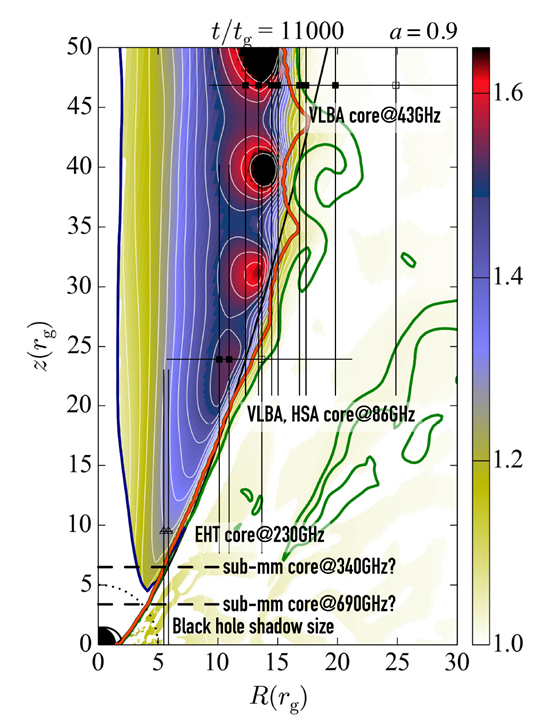研究成果藝廊 > 格陵蘭望遠鏡與次毫米波特長基線干涉儀計畫(GLT)
研究成果藝廊
格陵蘭望遠鏡與次毫米波特長基線干涉儀計畫(GLT)
| Formation of Superluminal Knots in GRMHD simulations |
|
圖片來源: Nakamura et al. (2018), ApJ, 868, 146

Superluminal motions are widely detected in AGN jets by utilizing the VLBI technique, implying that the flow is highly relativistic (apparent speeds are exceeding the speed of light ~ 10 - 30 c). We however do not understand how/where they are originated. We conduct a high resolution GRMHD simulations and reveal the formation of superluminal blobs near the funnel edge of the black hole driven jets. A filled color contour shows the Lorentz factor and FWHM/2 of mm VLBI radio core sizes in M87 are also displayed. Beyond R ~ 10 r_g (outside the light cylinder), the flow becomes super-Alfvenic, suggesting the toroidal field component becomes dominant. In this simulation, an axisymmetric mode (m=0) of the plasma instability (sausage type) is presumably growing due to the dynamical confinement of the funnel by the external coronal wind. Enhanced peaks of the Lorentz factor can be a seed of superluminal blobs, which may cause a local energization of the synchrotron particle. We can test our model by monitoring the variation of the flux density as well as the size of VLBI cores including the sub-mm VLBI cores (EHT).
|
|
 asiaa.sinica.edu.tw 媒體連絡: epo
asiaa.sinica.edu.tw 媒體連絡: epo asiaa.sinica.edu.tw
asiaa.sinica.edu.tw